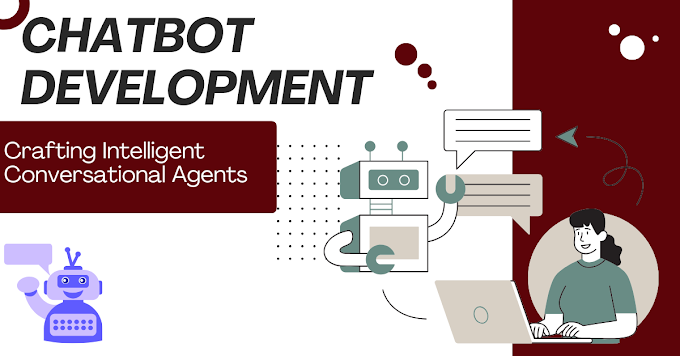Unleashing the Potential of Artificial Intelligence for Data Analysis
In the era of large facts, organizations and companies are grappling with massive amounts of records that, if harnessed effectively, can lead to precious insights and strategic choice-making. Enter Artificial Intelligence (AI), a transformative pressure that has revolutionized the field of records analysis. This comprehensive manual delves into the synergy between AI and information evaluation, exploring the technologies, methodologies, and packages that outline this powerful partnership.
Understanding the Intersection of AI and Data Analysis
Defining AI inside the Context of Data Analysis
Artificial Intelligence, in the realm of data evaluation, refers back to the usage of advanced algorithms and device gaining knowledge of fashions to process, interpret, and derive meaningful insights from considerable datasets. The goal is to automate the evaluation manner, find patterns, and generate actionable intelligence with pace and precision.
Key Components of AI-Powered Data Analysis
Machine Learning Algorithms
Supervised Learning:
In supervised learning, AI models are educated on classified datasets, permitting them to make predictions or classifications based on patterns learned in the course of schooling.
Unsupervised Learning:
Unsupervised gaining knowledge of includes reading unlabeled information to find out inherent styles or structures. Clustering and dimensionality reduction are commonplace unsupervised learning techniques.
Reinforcement Learning:
Reinforcement studying specializes in schooling fashions to make sequential choices by way of receiving comments within the shape of rewards or consequences.
Natural Language Processing (NLP)
Text Analysis:
NLP allows for the extraction of meaningful insights from unstructured text facts, permitting sentiment evaluation, subject matter modeling, and information retrieval.
Language Understanding:
AI-driven NLP fashions can recognize and interpret human language, facilitating extra superior and context-aware information evaluation.
Deep Learning Techniques
Neural Networks:
Deep neural networks, stimulated through the human brain's architecture, excel at complicated sample recognition tasks, making them effective in picture and speech analysis.
Convolutional Neural Networks (CNNs) and Recurrent Neural Networks (RNNs):
CNNs are ideal for picture analysis, while RNNs excel in sequential records evaluation, such as time-series information.
Applications of AI in Data Analysis
1. Predictive Analytics
AI-powered predictive analytics leverages ancient records to forecast destiny trends, enabling companies to make informed selections and assume marketplace changes.
2. Anomaly Detection
AI algorithms can identify anomalies or outliers in datasets, crucial for detecting fraud, errors, or uncommon patterns that could suggest a capability difficulty.
3. Automated Decision-Making
By integrating AI models into selection-making strategies, businesses can automate recurring selections, freeing up human assets for extra complex responsibilities.
4. Personalized Recommendations
E-commerce platforms and content vendors use AI to investigate user behavior and alternatives, providing personalized tips that enhance consumer engagement.
5. Customer Segmentation and Targeting
AI algorithms analyze client records to segment audiences primarily based on behavior, demographics, and alternatives, taking into account centered advertising techniques.
Benefits and Challenges of AI in Data Analysis
Benefits
Speed and Efficiency:
AI tactics massive datasets at incredible speeds, reducing the time required for records analysis and decision-making.
Accuracy:
Machine studying models can discover patterns and tendencies with excessive accuracy, minimizing human mistakes and biases.
Scalability:
AI-pushed facts evaluation systems can scale effects to address developing volumes of information without a proportional boom in assets.
Challenges
Interpretability:
The complex nature of some AI models makes it difficult to interpret their decision-making methods, elevating issues about transparency and responsibility.
Data Quality and Bias:
AI fashions are simplest as top because the facts they are trained on. Poor exceptional facts or biased datasets can lead to inaccurate or unfair predictions.
Future Trends in AI-Powered Data Analysis
1. Explainable AI (XAI)
Efforts to beautify the interpretability of AI models will become extra regularly occurring to construct agree with and facilitate higher know-how.
2. Augmented Analytics
The integration of AI into analytics tools will empower users with automated insights, permitting even those with out a deep analytical historical past to derive value from facts.
3. Continuous Learning Models
AI models that can adapt and analyze constantly from new statistics will become increasingly more crucial for staying applicable in dynamic environments.
Conclusion: A New Era of Data Intelligence
Artificial Intelligence, when harnessed for information analysis, transcends traditional methodologies, unlocking a brand new era of records intelligence. The synergy between superior algorithms, machine studying strategies, and natural language processing lets in organizations to extract actionable insights, make information-pushed choices, and gain a competitive facet in trendy records-centric panorama. As AI continues to conform, its function in statistics evaluation will absolutely form the future of how groups derive fee from their good sized troves of information. Embracing the capacity of AI-powered facts analysis is not merely a technological choice; it's a strategic imperative for those seeking to thrive within the age of information.
FAQ
Q: What is AI-powered statistics analysis?
A: AI-powered records evaluation includes the usage of advanced algorithms and machine mastering fashions to process and interpret massive datasets, uncovering styles, tendencies, and actionable insights.
Q: How does AI decorate traditional statistics analysis strategies?
A: AI complements traditional facts analysis with the aid of automating tactics, improving accuracy, and dealing with big volumes of data at high speeds. It additionally introduces skills which include predictive analytics and personalized hints.
Q: What kinds of device getting to know algorithms are utilized in information evaluation?
A: Machine mastering algorithms in information evaluation consist of supervised studying for prediction, unsupervised mastering for coming across styles, and reinforcement getting to know for sequential choice-making. Each serves unique analytical functions.
Q: What are the benefits of using AI for records analysis?
A: Benefits include improved speed and efficiency, enhanced accuracy thru sample popularity, scalability for handling big datasets, and the capacity to automate recurring choice-making processes.
Q: What demanding situations are associated with AI in statistics analysis?
A: Challenges consist of the interpretability of complex AI models, concerns about facts exceptional and bias, and the need for ongoing efforts to deal with ethical considerations in AI-driven choice-making.








